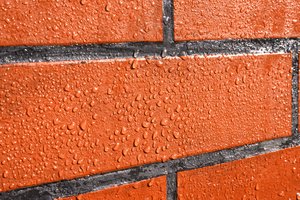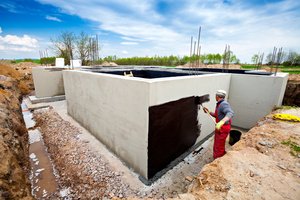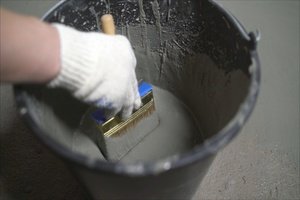If you’re in charge of a commercial building that’s made of brick, stone or even thick vinyl siding, waterproofing is probably the last thing on your mind. After all, isn’t the point of a building’s exterior to keep water out? Why would you need additional commercial waterproofing?
The truth is, even the most robust buildings are not immune to moisture intrusion. All types of material can let humidity in, even if you don’t feel it, which can lead to a big price tag later when problems reveal themselves. For this reason, many building owners choose commercial waterproofing services to make their structures last longer with less need for repair. Here’s what you need to know about how commercial waterproofing works and the steps that you can expect during the process.
Why Choose Waterproofing?
 moisture intrusion after waterproofing” width=”300″ height=”200″ class=”alignright size-full wp-image-1598″ />
moisture intrusion after waterproofing” width=”300″ height=”200″ class=”alignright size-full wp-image-1598″ />
Waterproofing might seem like a redundant effort, but it’s critical to keep your building in good shape. Stone, for example, might seem to simply wick water off of it, but in reality, that moisture is creeping into hairline cracks, gaps and holes in the material. Over time, this results in increased humidity on the back (interior) side of the material, which usually sits between the exterior and interior walls.
If this internal space becomes moist, it can contribute to mold growth. Not only can some types of mold make you sick, but they also weaken any wooden structures in the area, such as supports. Rotten beams and walls could lead to significant repairs in the future and even hazardous conditions.
Don’t forget that moisture makes regulating temperature more difficult. You could be spending more than you need to on climate control, both in the winter and summer, if you don’t take the time to waterproof.
The Five Steps in Commercial Waterproofing
Commercial waterproofing can take a variety of forms, but they’ll almost always proceed in the same way.

- First, you’ll start with a consultation with a pro. Since there are multiple waterproofing options to choose from, this will let you start out on the right foot based on the type of water inhibitor that is right for your building.
- Second, any excavation will be conducted, as appropriate. If your foundation needs to be revealed in order to waterproof it, that will occur during this stage. Otherwise, any additional prep work that has to do with making surfaces available will be finished before moving on.
- Third, the actual surface prep work will begin. Once the expert can see all of the surfaces that need attention, they’ll get them ready to receive the waterproofing material. Usually, this means washing them off to remove debris that might stop the application from adhering properly. They can wash using just water or a detergent, depending on the situation.
- Fourth, the coatings will be applied. Some coatings require special tools or certain environmental conditions, so work with the pro to determine when the best time for this project is.
- Finally, the material must cure. Waterproofing is sort of like painting-you can’t just roll the material on and then immediately start using it again. You need to wait for the waterproofing agent to cure, set or do what it needs to based on the type being used.
Which Type of Waterproofing to Choose
The right type of waterproofing for your building will come down to how big your structure is, where the waterproofing needs to happen, how bad your water problem is and even what the weather is like year-round in your area. It’s the expert’s job to help you pick the right waterproofing for your building. The options that are usually at your disposal are:

- Polyurethane membrane: This is a flexible, almost plastic material that is durable and resistant to drying and becoming brittle in the sun. It’s expensive, but it may be ideal for certain applications.
- Cementitious waterproofing: A special type of cement-based liquid is applied to your exterior. It’s not very flexible, so it’s best for buildings that aren’t under stress.
- Liquid waterproofing: A spray is applied (sometimes in multiple coats) to create a membrane that adheres to all the unique details of your structure.
- Bituminous waterproofing: This is similar to liquid waterproofing but can adhere better to certain materials more commonly found in commercial settings.
Trust the Experts to Help You Keep Your Commercial Building Dry
You don’t need to decide how to waterproof your commercial building on your own. Ask the experts for help determining the right solution for you. The pros at Waterproof Caulking & Restoration can apply long-lasting waterproofing solutions for your commercial building and help you to keep the structure strong and in good condition for as long as possible. Reach out to learn more about the waterproofing options at your disposal or to schedule an appointment to get started.
